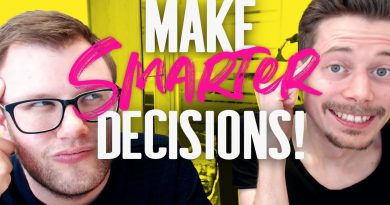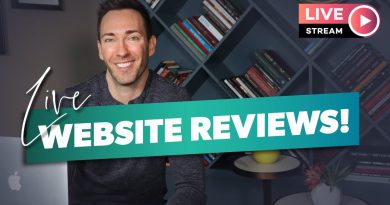How to Edit Your Content For SEO – Content Marketing Part 2 – SEO Unlocked
Today is another day of SEO Unlocked. Today we’re going to be covering editing.
RESOURCES & LINKS:
____________________________________________
Download the assets mentioned in this video: https://neilpatel.com/training/
SEO Unlocked Course Playlist: https://www.youtube.com/watch?v=Q_lySNxCag0&list=PLJR61fXkAx11Oi6EpqJ9Es4rVOIZhwlSG
Ubersuggest: https://neilpatel.com/ubersuggest/
Grammarly: https://www.grammarly.com/
Hemingway app: http://www.hemingwayapp.com/
CrazyEgg: https://www.crazyegg.com/
____________________________________________
I want to first start off with this quote from Steve Martin, he’s an actor, many of you guys have seen him on television. I don’t think anyone is ever writing so that you can throw it away. You’re always writing it to be something. In other words, if you wrote something, you’re not happy with it, don’t worry about it. There’s a whole editing process.
And it starts with going and finding the right keywords. Because if you’re writing content that never ranks, it’s going to be harder for you to get traffic.The search volume, the higher the number, the better.
SEO difficulty, typically when the number is 40 or lower, it’s easier to rank for and that’s the keywords that you ideally want to go after if you’re a new website, or you haven’t done much at SEO.
Then you also want to look at the pay difficulty. And of course you want to look for the cost per click as well.
The higher the number typically that also means the more lucrative that keyword is as well.
And as you’re creating your own outline and filling it in, and you’re generating your content, in essence you’re writing. And as you’re writing, finish it, and then start editing after but keep those keywords in mind while you’re writing.
You don’t have to produce a masterpiece from the first time that you’re done writing that article, because in the previous lessons, we talked about the fact that you also want your article to sit for at least 24 hours before you do anything with it.
And now that you have your content up and running in Google Docs, let’s go over the main steps that you need to follow in order to create a masterpiece through editing. So I call it STEPS.
The first one is you want to strive for brevity. A lot of people like adding in fluff, they’re like, Neil, my competition has 2500 words, I’m going to write 3000 words.
And if you feel that it provides value to the reader by all means do it. But if you’re just adding in fluff and wasting people’s time, then they’re not going to like you.
You’ll also want to delete redundant words, by deleting redundant words, it’ll get the point across quicker and people like that.
Make sure you also check for spelling and grammar errors. People don’t like that. And if you’re terrible at spelling and grammar, don’t worry about it, I am as well. I use a Chrome extension called Grammarly, and it makes my life really easy because it corrects my spelling and grammar, better than Google does or even better than Microsoft Word does.
The second step in STEPS is technical jargon. Who doesn’t want to sound smart? The thing that I hate the most and this is a big pet peeve of mine. So make your text easy to understand.
Another thing I love doing is using the app Hemingway app. It’s a free website app, it’ll tell you your overall score. And your overall goal is to just make your article super readable and easy to understand for anyone.
Next thing you want to ensure your writing flows. If it doesn’t flow, who’s going to want to read your content? You want your content flow seamless.
So my conclusion summarizes everything in my article, but also use a sub heading up conclusion right above it so that way people know, hey, this is the conclusion.
This is also why I push you to create outlines. Because if you create an outline, you can quickly tell before you write your content, if things are flowing.
The next step in STEPS is pain points. Think about the person reading it. Can you match your persona story pain points? If you can, you can relate more to them, and really hook them in.
You also don’t want to abuse pain points. You don’t want to push it really hard. You need to respect your readers time, and not just being like, ah, you suck because you have these issues like be nice and kind when you’re covering the pain points as well.
The final section is SEO. If your article is not optimized for Google, how are people going to find it? And even though you may have a list of 50 or 100 keywords, you don’t want to just keep stuffing in those keywords. Is it natural?
► If you need help growing your business check out my ad agency Neil Patel Digital @ https://neilpateldigital.com/
►Subscribe: https://goo.gl/ScRTwc to learn more secret SEO tips.
►Find me on Facebook: https://www.facebook.com/neilkpatel/
►On Instagram: https://instagram.com/neilpatel/
#SEO #NeilPatel #DigitalMarketing





